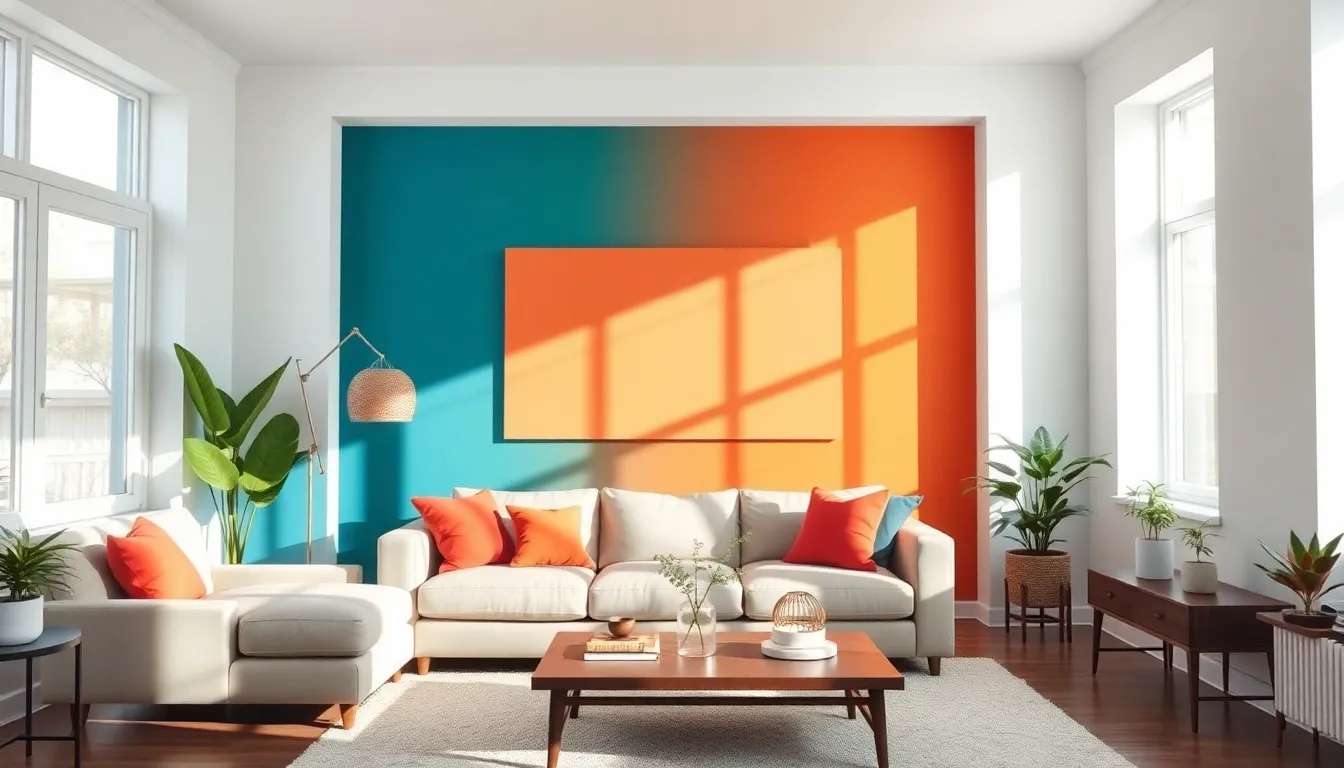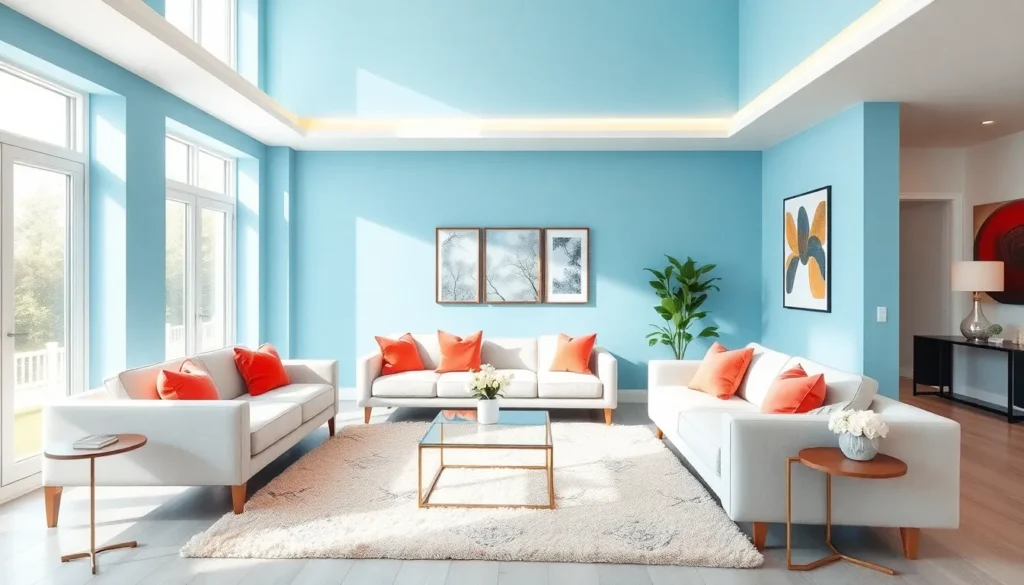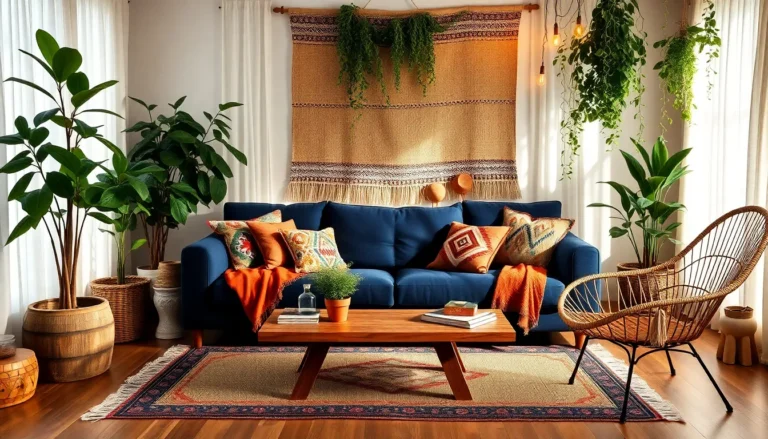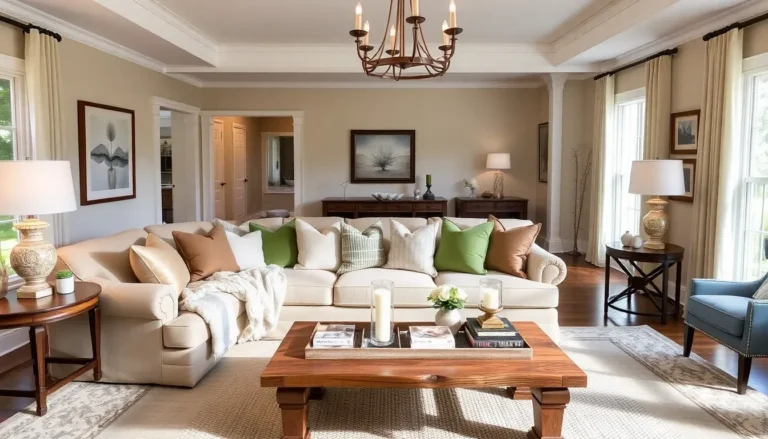Table of Contents
ToggleChoosing the right wall color for a living room isn’t just about aesthetics, it’s like picking the perfect outfit for a first date. You want to impress, feel comfortable, and convey just the right vibe. Whether it’s sunny yellows to energize the room or calming blues to create a serene oasis, the color on your walls does far more than you might think. So, let’s jump into the colorful world of wall hues, because believe it or not, it’s going to be more fun than sorting through your sock drawer.
Understanding Color Psychology

Color psychology plays a significant role in our emotions and behaviors. Different shades can elicit specific feelings: for example, warm hues like reds and oranges can stimulate conversation and create a cozy atmosphere. Conversely, cooler shades such as blues and greens promote tranquility and relaxation. This isn’t just fluff, studies have shown that colors can impact heart rate, mood, and even productivity. Select darker tones for a sophisticated edge, or lean into pastels for a softer touch, depending entirely on how you want your living area to feel.
Interestingly, the lighting in a room interacts with color perception. Natural light can enhance and brighten a hue, while incandescent or fluorescent lights might alter its appearance dramatically. This is why test swatches are crucial. Try out your chosen color during different times of the day to understand how it feels in various lighting conditions.
Popular Color Choices for Living Rooms
When it comes to selecting colors for living rooms, certain shades seem to have earned perennial popularity. Here’s a rundown of some of the most prevalent colors:
- Neutral Tones: Winners in the living room realm, shades like beige, taupe, and whites provide a versatile backdrop that allows for easy updates with decor changes.
- Soft Blues: These are beloved for their calming effects, creating a serene atmosphere that’s perfect for relaxing.
- Earthy Greens: Nature-inspired colors have gained traction, offering a fresh, organic vibe that resonates in indoor settings.
- Warm Grays: Providing a modern feel, warm gray tones have become essential in contemporary design, bridging the gap between cool and warm hues.
- Bold Accent Colors: Consider deep navy or forest green for accent walls. These tones can add dramatic contrast without overwhelming the space.
How to Choose the Right Wall Color
Choosing the right wall color can feel overwhelming, but it doesn’t have to be. Start by considering the size of the room. Lighter shades can make a small area feel larger, while deeper colors can add warmth to expansive spaces. Next, think about your existing furniture and decor. Choose colors that harmonize with what you already have.
Also, consider your personal style and the atmosphere you want to create. Would you prefer an inviting area for social gatherings, or a tranquil setting for cozy evenings? Explore using color wheels and online color simulators, these tools can help visualize how different hues will look in your space.
Combining Colors: Palettes and Accents
Once the main color is chosen, the next step is figuring out how to bring the room together with accents and palettes. A great way to start is by utilizing the 60-30-10 rule: 60% of the room should be your main color, 30% can be a secondary color, and 10% should be reserved for accents.
Use complementary colors to keep things visually stimulating. For example, if your primary color is a soft blue, consider pairing it with a warm wood tone or beige as your secondary color, with vibrant throw pillows or artwork in coral for those accent touches. This combination keeps the room from feeling too flat while ensuring each element supports the overall aesthetic.
Trends in Living Room Wall Colors for 2025
As we look to 2025, emerging trends are likely to shape the way living rooms are styled. Expect a return to rich, deep hues such as emerald green and burnt orange, which promise to add sophistication and a touch of drama. Also, sustainable colors that reflect the environments, think earthy browns and sky blues, are making waves, bringing a connection to nature indoors.
Muted shades with a hint of gray are also trending, providing a modern yet inviting backdrop. These colors offer versatility for decorating and can easily bridge the gap between contemporary and traditional styles.
Tips for Painting Your Living Room Effectively
Painting a living room sounds a lot harder than it is. Here are some simple tips for a smooth and successful experience:
- Prep Is Key: Clear the furniture and cover the floors with drop cloths. Patch old holes and sand rough spots to create a smooth canvas.
- Choosing the Right Finish: Matte finishes hide imperfections well, but if you have kids or pets, consider semi-gloss for easier clean-up.
- Use Quality Brushes and Rollers: These tools make all the difference in achieving a professional look. Invest in good supplies.
- Don’t Rush It: Allow sufficient drying time between coats. It might be tempting to rush through, but patience yields better results.








